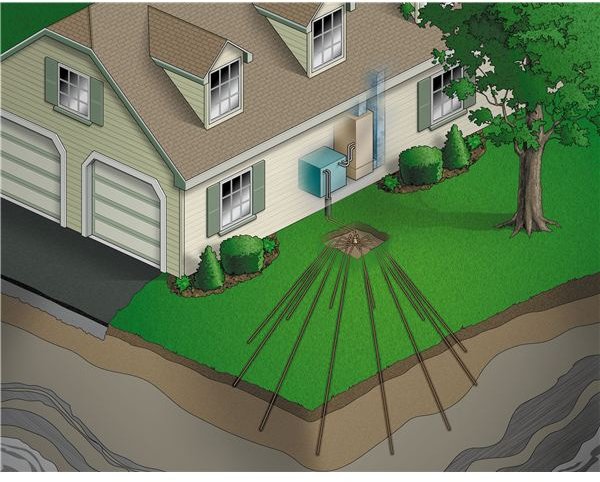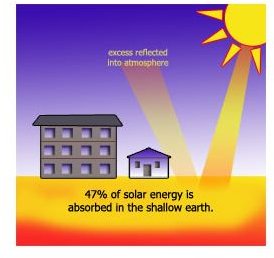Using Geothermal Energy for Heating or Cooling Homes
Introduction
The use of geothermal energy as a renewable energy source has greatly increased in the last few years. Geothermal systems harness the green energy of the earth, using small amount of electricity. Not only are these systems high in efficiency, but they also facilitate low electricity bills. By providing geothermal systems in residences, a substantial saving on electricity bills can be facilitated. One such innovative system has been introduced by a company called Earthlinked Technologies. The Earthlinked system, as the system is called, uses the stable underground temperature of the earth to heat the home in winter or lower the interior temperature in summers.
The Concept behind Geothermal Systems
No matter what part of the earth it is, equator or poles, the underground temperature of the earth remains the same throughout the year. The Geothermal systems utilize this temperature of the earth to produce green energy.
If it is winter, the underground heat is used by the system to evaporate a refrigerant which is then made to pass through a compressor for an increase in temperature and pressure. The hot refrigerant transfers the heat to the cold air inside the home through the fan coil. The refrigerant gives up heat and gets converted to liquid, which is then again sent to the ground to get heated. In this way the internal temperature is maintained in winters. In summers, the process is reversed.
Why use Earthlinked Geothermal system?
In case of a conventional air conditioner system, the heat is taken away from the refrigerant using the outside air. This means that on a hot day, the compressor of the system vigorously compressing the air at hundred and ten degrees to bring the refrigerant at optimum temperature. Thus the compressor consumes more power to keep the interior temperature comfortable.
However, in case of earthlinked system, the copper coils go deep down inside the earth exchanging heat of the refrigerant with the earth. The Earth’s temperature generally ranges from 40-75 degree Celsius even in the summers and thus provides an excellent heat sink for high refrigerant temperature and lowers the usage of electricity.
Construction
There are three main parts of the Earthlinked system. They are:
- A small copper earth loop
- A heat pump
- A distribution system
The small copper earth loop is kept in contact with the earth for exchanging of the temperature. A heat pump is the heart of the system, which helps in circulation of the refrigerant through the copper earth loop. Distribution system provides the heating or cooling effect throughout the home.
Apart from this the system also has two options for heating water:
- A de-superheater that takes the waste heat of the air conditioning unit and pass it to the water heater.
- A conventional water heater that supplies hot water for domestic purposes.

Working
The copper earth loop is a labyrinth of thin pipe like structures made from copper. This copper loop is connected with the heat pump to circulate the refrigerant throughout the system and to exchange thermal energy with the earth. The loops can be arranged in horizontal, vertical or diagonal manner. Having the highest temperature differential, the copper loop can extract maximum heat from the earth even with the least contact. Moreover, copper is a naturally available material which prevents corrosion and thus resists loop failure.
The heat pump is the heart of the system that circulates refrigerant through the loops. The heat pump consists of three important parts – compressor, condenser and evaporator. All the three components are sealed in a closed unit and work in the same manner as any conventional air conditioning unit. However, the unit is simpler as it does not have water circulating pump, heat exchanger or thermostatic expansion valve.
The flow of the refrigerant is controlled by two simple flow control devices – active charge control and liquid flow control. The mechanical controls adjust the flow of the refrigerant to ensure highest efficiency of the system. Without any use of complex electronic devices, the mechanical controls prevent the extra cooling of the condenser and thus keep lower refrigerant head pressure to facilitate less energy consumption and increased heat transfer.
The main advantage of heatlinked system is that as there is no water circulating loop or intermediate heat exchanger the installation, operation and maintenance costs are extremely low. Moreover, the system can be installed even in small area because of its small size.

